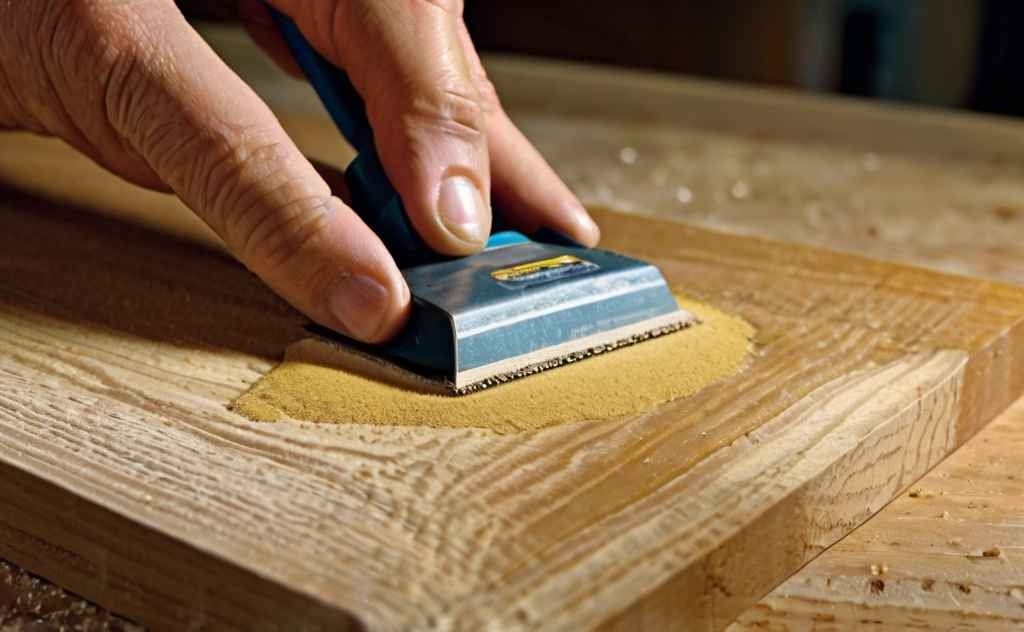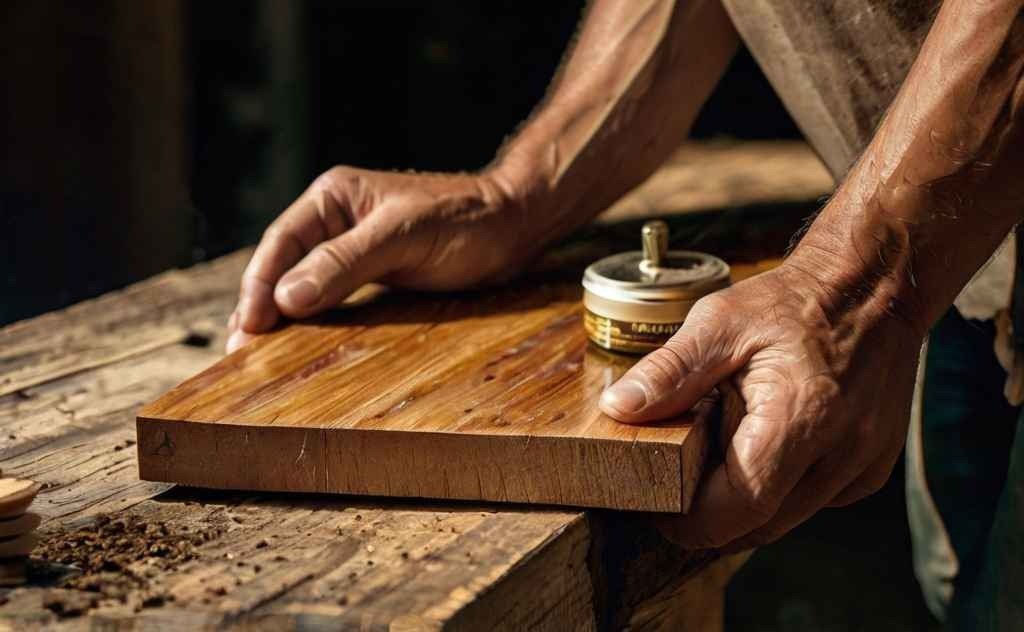In woodworking, wood finishing is a crucial procedure that improves the look and durability of your wooden creations. Walnut oil is a natural solution for this; although it’s mostly used in cooking, it can also be added to wood to give it a lovely, organic sheen. This tutorial will show you how to make walnut oil for wood finishing, outlining its advantages and offering a methodical methodology to guarantee the beauty of your wood projects.
What Is Walnut Oil?
The rich, golden oil known as walnut oil is taken from the walnut kernels. It’s highly valued for its nutritional content and frequently used in salads and cookery. However, walnut oil may be used as a great wood finish outside of the kitchen.
Benefits for Walnut Oil
Walnut oil is most frequently used in kitchens but its qualities also make it a wonderful choice for wood finishing. It goes deep and leaves the wood texture enhanced with a glossy, rich finish.
Why Use Wood with Walnut Oil?
The deep penetration of walnut oil is well known for its ability to shield wood from the inside out. It gives the natural texture with more character and offers a long-lasting, water-resistant finish. It’s also a food-safe alternative which makes it perfect for wooden cutting boards and kitchen utensils.
Comparing This Oil to Other Oils
Walnut oil smells nice and gentle and it’s easier to apply than other oils like tung or linseed oil. It might need more frequent reapplication because it might not be as long-lasting as certain synthetic finishes, so let get in to how to make walnut oil for wood?
Explore: How much walnut oil to take per day?
Materials Required
Before starting to make walnut oil for wood, collect the following supplies:
- Uncooked walnuts, ideally English walnuts
- A nutcracker is a powerful tool
- Blender or food processor
- A strainer with fine mesh or cheesecloth
- Bowl Jar with a snug-fitting cover
- Cooking pot with heat extraction if applicable
- A thermometer
Step-by-step guide to make walnut oil for wood
Getting the Walnuts Ready
Selecting and cracking the Right Walnuts:Select fresh, high-quality walnuts to make walnut oil for wood because English walnuts break more easily and have a larger oil content, they are preferred. Crack the walnuts open with a nutcracker. Gently extract the kernels and dispose of the shells. For a good output, aim for roughly 1 pound of walnut kernels.

Methods for Blending Walnuts to Make a Paste : Put the walnut kernels in a blender or food processor. Process them in a blender until a thick, creamy mixture forms. This facilitates the nuts’ oil release.
Tools for Mixing: The best appliance is a powerful food processor or blender. To prevent contaminating the walnut paste, make sure it’s clean.
Extracting the Oil and Extraction Techniques: Heat extraction and cold press are the two main techniques to make walnut oil for wood:
Extraction by Cold Press, in which put the walnut paste over a bowl in a cheesecloth or fine-mesh strainer. To remove the oil, twist and squeeze the towel. Although labor-intensive, this process retains the oil’s inherent qualities.
Heat Absorption,in which take a cooking pot, slowly heat the walnut paste for a more effective extraction. To protect the oil, keep the temperature below 120°F (49°C). Pour the oil through cheesecloth as soon as it starts to separate.
Cleaning and Decontaminating Walnut Oil: Give the extracted oil a few hours to settle. This allows any leftover pieces of walnut to sink to the bottom.
Procedure for Setting and Filtering: Leaving the sediment behind, pour the clear oil into a jar that has been cleaned. You can strain the oil through cheesecloth or a fine mesh strainer once more for further purification.
Best Practices for Storing Walnut Oil Storage: Keep your walnut oil somewhere cold and dark. For protection against air and moisture, use a jar with a tight-fitting lid.
Considerations for Shelf Life: Walnut oil that is kept properly can last for several months. It’s time to make walnut oil for wood, a fresh batch if the oil starts to lose its flavor or color.

Explore: How walnut oil is made?
Getting the Wood Surface Ready
Sanding the Wood: Sand the wood surface to the appropriate smoothness before adding the oil. For a smooth texture, use fine-grit sandpaper at the end after using coarse-grit.
Scrubbing the Exterior: To get rid of any dust or dirt, use a clean, moist cloth to wipe the sanded wood. Make sure that the area is totally dry before applying oil.
How to Apply Walnut Oil Step-by-Step to Wood Procedure for Applications?
First Coat: Liberally coat the wood with walnut oil using a clean cloth or brush.
Rubbing In: Make sure the oil reaches deep into the wood by rubbing it in with circular motions.
Time of Rest: Give the oil 15 to 30 minutes to settle.
Wipe Excess: Use a fresh cloth to remove any leftover oil.
Methods for Level Coating
Take your time and apply the oil evenly. One thick coat is preferable to several thin coatings.Give the initial coat at least a full day to dry. A durable finish requires this cure period.
Increasing Sturdiness: Apply extra coats for better protection, allowing each to completely dry before applying the next. Two or three coats should usually be enough.

Maintenance and Re-Use:
Periodically reapply walnut oil, paying particular attention to areas that are damp or frequently used. Frequent upkeep preserves the wood’s protective and pristine appearance.
Advice on Upkeep: Reapply oil as necessary and wipe the wood down with a moist towel on a regular basis. Steer clear of harsh agents that can remove the oil finish.
Drawbacks of Walnut Oil
Although walnut oil works great in some situations, it might not be the most resilient choice for outdoor or heavily trafficked products. Regular upkeep and reapplication are necessary.For some applications, other oils and synthetic finishes may be a better fit because of their greater longevity and lower maintenance requirements.Here are a few key considerations:
- Drying Time: Walnut oil takes a long time to dry compared to other wood finishes like tung oil or polyurethane. This can be inconvenient if you need to handle or use the wooden item shortly after application.
- Yellowing Over Time: Walnut oil can impart a yellowish hue to the wood over time. While some people appreciate this warm tint, others may find it undesirable, especially on lighter woods where it can alter the natural appearance significantly.
- Susceptibility to Rancidity: Unlike polymerizing oils, walnut oil can go rancid if it doesn’t dry completely, particularly in humid or poorly ventilated environments. This can lead to unpleasant odors and potential degradation of the wood finish.
- Food Safety Concerns: Although walnut oil is often marketed as food-safe, it may still pose a risk to individuals with nut allergies. This is particularly relevant for kitchen items like cutting boards and wooden utensils.
- Limited Durability: Walnut oil does not provide as robust a finish as synthetic varnishes or even other natural oils like tung or linseed oil. It offers limited protection against scratches, water, and other environmental factors.
- Frequent Reapplication: To maintain the finish, walnut oil needs to be reapplied more frequently than other finishes. This can be time-consuming and increase maintenance efforts.
- Potential for Mold and Mildew: In humid conditions, the oil can attract mold and mildew if not properly dried and cured, which can damage the wood and create health concerns.
Swaps for Commercial Wood Finishing Oils and Walnut Oil
Numerous oils are available in the market that are specifically made for wood finishing alternative to make walnut oil for wood. Additives are frequently used in these to enhance durability and performance.Oils and additional ingredients that improve the protective properties, such UV resistance and quicker drying periods, may be combined in commercial blends.
Explore: How to use walnut oil ?

Conclusion:
The technique to make walnut oil for wood finishing is satisfying and yields a stunning, organic finish. It might not be the most popular method, but for those who want to maintain and improve their wooden goods, it offers a food-safe, environmentally responsible choice. You can keep your wood looking its best and keeping it safe with regular upkeep.
FAQs
1.Can you use walnut oil on any kind of wood?
The majority of wood kinds, particularly those used in kitchenware like cutting boards and cutlery, are safe to use with walnut oil.
2.When is the best time to reapply walnut oil?
Every few months or when the wood begins to look dull or dry, reapply walnut oil.
3.Is it OK to apply walnut oil to patio furniture?
Outdoor furniture can be coated with walnut oil, albeit reapplication may be necessary more frequently owing to weather exposure.
4.Does walnut oil improve the wood’s color?
Indeed, walnut oil brings out the wood’s inherent color and grain, making it appear richer and more vivid.
5.How should walnut oil be applied?
After applying the oil with a clean cloth or brush and rubbing it in in circular motions for 15 to 30 minutes, remove any leftover residue by wiping it off.


1 Comment
[…] Explore: How to make walnut oil for wood? […]